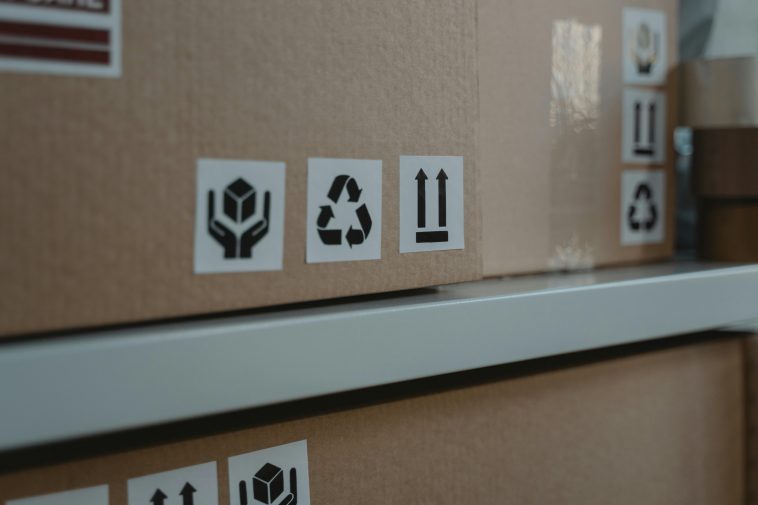E-commerce businesses are the most convenient way for customers to shop. As a small business owner, this practice saves you money and time, while breaking through geographical barriers and making transactions easier for everyone.
E-commerce success goes beyond your digital storefront, however: You need to source great products, select the right e-commerce platform and, perhaps most importantly, fulfill your orders in a timely and efficient manner.
In this article, we will take you through everything related to order fulfillment so you end up with a streamlined process that gives you peace and makes your customers happy.
What is E-commerce Order Fulfillment?
Order fulfillment refers to the process of receiving an order, processing it, and delivering the product to customers.
E-commerce has shifted the buying experience in a way that warehouses now have to pack and ship individual orders instead of bulk shipping to a traditional store.
With this change, speed, pricing and accuracy have become crucial to create and keep brand loyalty.
How to Fulfill an E-commerce Order as a Small Food Business Owner
There are several ways in which you can fulfill an e-commerce order. Choosing a method depends a lot on the volume of orders you get, the inventory you need, the handling of your products, and your preferred sales channel.
Nevertheless, here are the most common ones:
Self-Fulfillment

Also known as In-House order fulfillment, this type of fulfillment implies storing and managing inventory from the comfort of your own warehouse. It’s a great way to start since you’ll familiarize yourself with every step of the process, and it is a low-cost option while your business remains pretty small.
Pros: Maximum control over packaging and unboxing experience. Zero risks for businesses with more specific needs (i.e. custom orders). Ideal when there’s no extra cash flow.
Cons: Time-consuming. Can get overwhelming, which can lead to uncertain delivery times and inaccurate orders. Lack of storage space in the long run.
3PL: Third-Party Logistics

The other side of the coin is outsourced fulfillment done by a third-party logistics company (3PL) or a fulfillment company. Although both can stand for the same, a 3PL takes care of the entire supply chain, including transportation and warehousing, while fulfillment companies deal with returns and inventory management.
Pros: Work with fulfillment professionals. Lower shipping rates from carriers. Great for when it’s become impossible to fulfill orders in-house.
Cons: Reliance on a third party. Some companies require a minimum monthly order volume. Food businesses need extra planning to control temperature and humidity.
Amazon

Over 70% of Canadians have purchased on Amazon.ca.
Given the scale of this 3PL, as a small to medium food business owner, it is worth knowing their two programs, FBM (Fulfillment by Merchant) and FBA (Fulfillment by Amazon).
FBM allows you to benefit from the Amazon platform while having complete control over your inventory, packaging and shipping. For FBA, however, the only thing you need to do is send your products to Amazon and let them handle the rest.
Pros: Eligibility for Amazon Prime and its faster shipping. No need to worry about customer service or logistics. Boost your product on search results.
Cons: Everything fees—fulfillment fees, inventory fees and additional fees for returns and long-term storage. And not all small businesses can qualify for FBA.
Drop Shipping

For those small food business owners who want a low-commitment option but don’t want to manage inventory or fulfill orders by themselves, drop shipping can be an alternative: Instead of fulfilling a minimum number of orders, once an item is sold the business buys it from a third-party supplier that takes care of packing and shipping the order.
Pros: No inventory management. Space for business growth to meet customer demand. Time to focus on marketing and customer acquisition.
Cons: Limited control over shipping times. Lower profit margins due to the wholesale costs of your products. A business method with more competition.
Other Fulfillment & Delivery Methods
Hybrid
As its name suggests, hybrid fulfillment combines different order fulfillment methods to increase efficiency and save costs. In other words, it allows you to take the best of each model and tailor it to your small food business needs.
Hybrid fulfillment can also help you reach new customers: You can cater to international customers, for example, if you work with a specialized 3PL that promises lower shipping costs and delivery times.
Crowdsourcing
Instead of relying on a third-party company to fulfill your order, crowdsourcing makes use of local, contracted workers to take care of the process. It has become especially popular for on-demand, food and last-mile delivery services.
This is a great option if you’re looking to save some money on the delivery process, but it requires consistency when selecting your individual workers and developing a method to track your orders.
Curbside Pickup
Implementing curbside pickup can help you reduce shipping expenses while making the delivery process cheaper and more convenient for your customer. This speedy service is the best for time-sensitive orders containing perishable goods: It allows customers to receive their orders faster than traditional shipping methods.
Before offering this service, consider:
Having a designated pickup location.
Sending confirmation emails to your customers when their order is ready for pickup.
Using a time slot booking system to improve order flow.
Tracking inventory to avoid stockouts.

Don’t stress too much about choosing the right method right away. It’s natural for small businesses to change their order fulfillment method depending on where they are on their business journey.
Order Fulfillment Steps for Small E-commerce Food Businesses
Whether you’re thinking of fulfilling your orders in-house or not, here are the most basic order fulfillment steps you should take into account as a small e-commerce food business owner:
Receiving the order:
An order is received through your online store or your phone.
Order details are captured, such as items, shipping address and payment information.
A confirmation is sent to your customer.
Verifying the order:
Pricing and item accuracy are checked.
Customer information is validated to prevent any loopholes later.
Product availability is confirmed.
Picking the order:
Special technology like barcode scanners is used to locate your items faster.
Items are picked or ordered from your inventory.
Accuracy is checked with a pick list to prevent returns.
Packing and shipping the order:
Items are packed with their appropriate labels to protect them during transit.
Carrier is selected depending on customer preference (cost, delivery speed and service area).
The package is handed over to the carrier and, if available, tracking information is sent to the customer.
Tracking and delivering the order:
Order statuses like “shipped,” “out for delivery,” and “delivered” are updated.
Items are delivered to your customer.
Successful delivery is confirmed.
Getting feedback from your order:
Reviews and stars on your products are obtained.
Post-delivery data is analyzed for improvement: Was the delivery on time? Were there any complaints?
Returns, exchanges or refunds are processed.
To summarize, order fulfillment is all about picking, packing, shipping… and a lot of double-checking. We know, however, that one of the most challenging parts for small food business owners is managing returns, especially for those who do not have a policy in place.
Here are some quick tips to get you started:
Handling Returns in Canada
Online shopping has become increasingly popular among Canadian customers since the COVID-19 pandemic. With the rise in e-commerce orders, it’s natural for returns to become just as important.
To give you an idea, nearly half of Canadian online shoppers have made a return this year. What’s more, 82% of them are more likely to purchase from an e-commerce business offering a hassle-free return policy.
Although you are legally obligated to accept the return of defective items, Canadian law doesn’t require you to set a return or exchange policy. As a food business selling perishable goods, however, you can increase customer satisfaction by having a robust return policy that includes:
A limited return window: to prevent perishable items from spoiling.
Clear return conditions: If you’re not lenient with your return conditions, specify the ones under which returns are accepted (damaged or incorrect products only, for example).
A customer service focus: Transmit your commitment to solving the problem as efficiently as possible.
Tip: Provide a clear and visible guide on how to store your products so when, say, your customer stores it in their cupboard instead of the fridge, you’re not fully responsible.
The most important thing to consider when handling returns as a small e-commerce food business owner is making sure that whatever your policies are, they’re accessible through your website, social media or confirmation emails.
Tips to Improve Your Order Fulfillment Process
Optimize packaging: Invest in packaging that can fit all of your products, is protective and includes important indications like expiry date and storage.
Make picking more efficient: Use pick-to-light systems, batch orders together and implement error prevention techniques like pick lists with images and quality control checkpoints.
Get techy: Look into free software that can manage your inventory, track the fulfillment of your orders and control your transportation.
Build relationships with your carriers: Choose to work with people who align with your needs, and with whom you’re comfortable talking to address issues.
Communicate with your customers: Don’t leave them aside! They more than anyone will appreciate information on their order, especially when there are disruptions.
How to Save Money when Fulfilling Orders As a Small E-commerce Food Business Owner

Order fulfillment is a crucial element of business success, but that doesn’t mean that all of your budget has to go into it. Implementing cost-saving measures can give you space to focus on other aspects of business growth.
There are small but notable things you can do to improve profitability when it comes to order fulfillment:
Compare different carriers to find the best shipping rate that accommodates your needs.
Package smart to decrease the dimensional weight of your packages.
Use technology to avoid errors and second deliveries.
Change fulfillment methods based on your order volume and seasonality, like outsourcing during growth periods and seasonal spikes and dropshipping when you have a high volume of orders but not enough inventory space.
Get ready for peak season rates (which normally start in August until the end of the year) and adjust your budget accordingly.
Order Fulfillment Solutions for Small Canadian Food Businesses
While we compiled the most accessible companies in terms of minimum order amount with the best reviews, note that choosing a fulfillment solution should be based on your specific needs and budget, and requires further inquiring to learn about quotes and service fees.
Top Order Fulfillment Companies & Services in Canada
Pack Fresh
If you’re a small food business owner working with frozen and dry products, Pack Fresh offers ideal storage for your products. This 3PL is based in Mississauga but fulfills orders across Canada with various locations across the country. Their customers highlight their quick and attentive customer service.
Blackbuck Logistics

We like Blackbuck Logistics’ LTL Transportation, a cost-saving transportation solution designed for businesses with smaller loads. They make transportation more efficient by combining packages from different shippers into one truck, while you only have to pay for the space your goods take.
You’ll be able to track your shipments in real-time but keep in mind that they can take a bit longer due to order consolidation.
SHIPHYPE
SHIPHYPE is an e-commerce specialized 3PL that uses its own fulfilment software to manage every aspect of your orders. Their system is easy to use and is integrated with your sales channel so both of them get updated as your order gets fulfilled.
They also select the best rate for your package in real time and promise same-day shipping before 2 PM.
If you’re curious about services for each Canadian region, we made a small list for you to check out.
Top Order Fulfillment Companies & Services in Central Canada
With Toronto being Canada’s largest city, many international fulfillment centers take advantage of its railways and seaports to conduct their operations. Other places, like Mississauga and Ottawa, are crossed by highways that allow you to deliver nationally and into the United States.
Quebec has a thriving logistics industry as well, which is supported by the province’s bilingualism, e-commerce focus and infrastructure.
Shipwire

By far one of the most global 3PLs we found, Shipwire counts with two warehouses in Ontario. Their system for handling food products, first-in, first-out, ensures that older inventory is used first to prevent waste and maintain quality.
They also excel at handling returns, even going so far as to help you make your returned packages look like new again.
Top Order Fulfillment Companies & Services in the West Coast
Canada’s West Coast, especially British Columbia, has become a hub for global supply chains with its bordering location. Most companies specialize in the entire order fulfillment process, with smaller ones leaning more toward late-mile delivery services.
Lantrax

If what you’re looking for is storage, look no further from Lantrax.
This logistics company with headquarters in Vancouver has multiple divisions to cater to your entire supply chain, but we want to highlight their West Coast Container service, which lets you rent new and used containers to store your products. These containers can be stored in their Vancouver facilities and delivered wherever you need.
Top Order Fulfillment Companies & Services in Atlantic Canada
Compared to other regions of Canada, the warehousing and logistics industry in Atlantic Canada is smaller. It mainly focuses on moving goods within the region and handling products that need to be kept cold, like frozen foods.
Micco Warehousing & Logistics

Micco is located in Halifax, with facilities across Atlantic Canada. If you’re interested in more personalized packaging for the holidays or special subscriptions, they can help you add tags and labels and pack different products into bundles.
Their vast warehousing space and order fulfillment management allow for business growth.
Top Order Fulfillment Companies & Services in the Prairie Provinces
The extension, agricultural focus and cold chain logistics of these provinces have made the region crucial for the transportation and distribution of goods in Canada. Their connection by rail, road and air has resulted in an important intermodal transportation that reaches major North American markets.
Louvic






GIPHY App Key not set. Please check settings